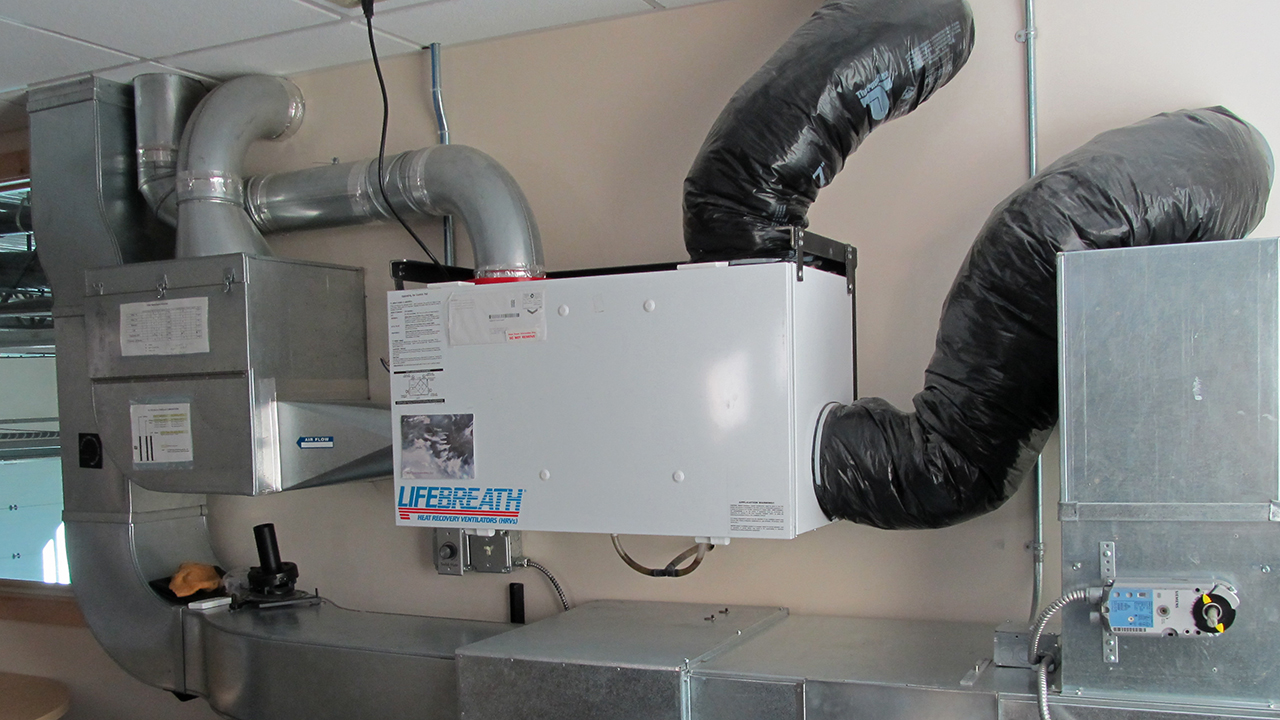Simple Tips to Maximize HRV Efficiency
Wiki Article
Exactly How Heat Recovery Ventilation Enhances Indoor Air Top Quality and Reduces Energy Expenses
Heat Recovery Ventilation (HRV) systems play a necessary duty in improving indoor air top quality while all at once decreasing power costs. By efficiently exchanging stagnant indoor air with fresh exterior air, HRVs aid preserve ideal moisture and decrease pollutants. Additionally, their ability to recover warmth from outgoing air reduces the stress on home heating and cooling systems. As power costs remain to climb, understanding the full capacity of HRV systems comes to be significantly essential for property owners and companies alike.Understanding Heat Recovery Ventilation Systems

Heat recovery ventilation (HRV) systems play an essential role in enhancing interior air top quality, particularly in contemporary, energy-efficient buildings. These systems are made to move heat from the outward bound stale air to the inbound fresh air, consequently minimizing energy loss while preserving perfect temperature level degrees indoors. HRVs include a heat exchanger, fans, and ductwork, helping with the constant flow of air. By eliminating interior contaminants and presenting fresh air, HRVs assist to stabilize moisture levels, stop mold development, and decrease irritants. The effectiveness of HRV systems hinges on their ability to recoup approximately 80% of the heat from the tired air, advertising power conservation while guaranteeing a healthy and balanced indoor setting. Their integration is vital in attaining sustainable living methods.
The Importance of Indoor Air High Quality
Indoor air quality (IAQ) is a critical element affecting the wellness and well-being of owners in any setting. Poor IAQ can cause numerous health and wellness problems, consisting of breathing troubles, allergic reactions, and tiredness. Furthermore, it can exacerbate status quo such as asthma. Elements adding to low IAQ include contaminants from interior sources like cleansing agents, mold, and insufficient air flow. As a result, maintaining good IAQ is vital for advertising a risk-free and comfy living or working area. Effective methods to boost IAQ involve routine monitoring of air top quality, proper ventilation systems, and decreasing the usage of unsafe substances inside your home. By focusing on IAQ, individuals can assure a much healthier environment that cultivates productivity and overall lifestyle.Energy Efficiency Conveniences of HRV Systems
Numerous homeowners and building supervisors are progressively recognizing the power efficiency advantages of warmth healing air flow (HRV) systems. By transferring warm from exhausted indoor air to incoming fresh air, HRV systems considerably reduce the energy needed for heating & cooling. This process lessens dependence on conventional Get More Info heating and cooling systems, bring about reduced power expenses. Additionally, HRVs assist maintain a balanced interior climate, preventing extreme home heating or cooling needs. The capacity to recuperate approximately 90% of the heat from outgoing air additionally supports sustainability initiatives by decreasing general power intake. Consequently, HRV systems add not only to set you back savings however also to a reduced carbon impact, aligning with the expanding focus on energy-efficient structure practices.Installment and Maintenance Considerations
The reliable execution of warmth recovery air flow (HRV) systems requires mindful factor to consider of installment and maintenance aspects to guarantee peak performance. Correct positioning of the HRV device is necessary, as it ought to be installed in a location that maximizes air movement while decreasing noise disruption. Furthermore, ductwork has to be suitably sized and shielded to avoid power loss. Routine upkeep, consisting of filter substitute and system cleansing, is important to safeguard ideal functionality and interior air high quality. Proprietors ought to establish a routine maintenance schedule to determine and attend to potential issues before they escalate. Cooperation with experienced specialists throughout both setup and upkeep phases can boost the durability and performance of HRV systems, eventually leading to far better interior atmospheres and minimized power costs.
Real-World Applications and Success Stories
Discovering real-world applications of warm healing ventilation (HRV) systems reveals their substantial influence on indoor air high quality and energy efficiency throughout numerous setups. In residential structures, house owners have actually reported improved air top quality, leading to fewer allergies and breathing issues. Schools carrying out HRV systems have actually noted enhanced student focus and minimized absenteeism as a result of much better ventilation. Business structures, such their website as workplaces and retail spaces, have experienced lower power expenses and boosted worker productivity. For example, a corporate workplace in a pleasant climate accomplished a 30% decrease in energy expenses after installing an HRV system. These success tales show that HRV technology not only adds to healthier environments however additionally provides tangible financial advantages, making it an important financial investment for various industries.Frequently Asked Questions
Can HRV Solutions Minimize Allergens in Indoor Air?
The performance of HRV systems in lowering indoor allergens largely depends upon their ability to filter and exchange air. HRV Heat Recovery Ventilation. By continually changing stagnant air, these systems can significantly decrease irritant degrees throughout indoor atmospheres
Just How Does Moisture Affect HRV System Efficiency?
Humidity substantially influences HRV system performance; high levels can cause condensation, minimizing performance, while reduced moisture may enhance air exchange. Stabilizing moisture is vital for suitable operation and learn the facts here now keeping indoor air high quality.Are HRV Equipments Noisy Throughout Procedure?
HRV systems can create varying noise levels during procedure, depending upon their layout and setup. Some units operate quietly, while others may generate visible sound, particularly at greater air movement settings or when poorly preserved.What Is the Ordinary Life Expectancy of an HRV System?

Can HRV Systems Be Used in All Climates?
HRV systems can be used in different climates, but their efficiency may differ - HRV Heat Recovery Ventilation. In extreme temperature levels, changes or supplemental systems may be essential to guarantee optimal efficiency and convenience while maintaining indoor air qualityReport this wiki page